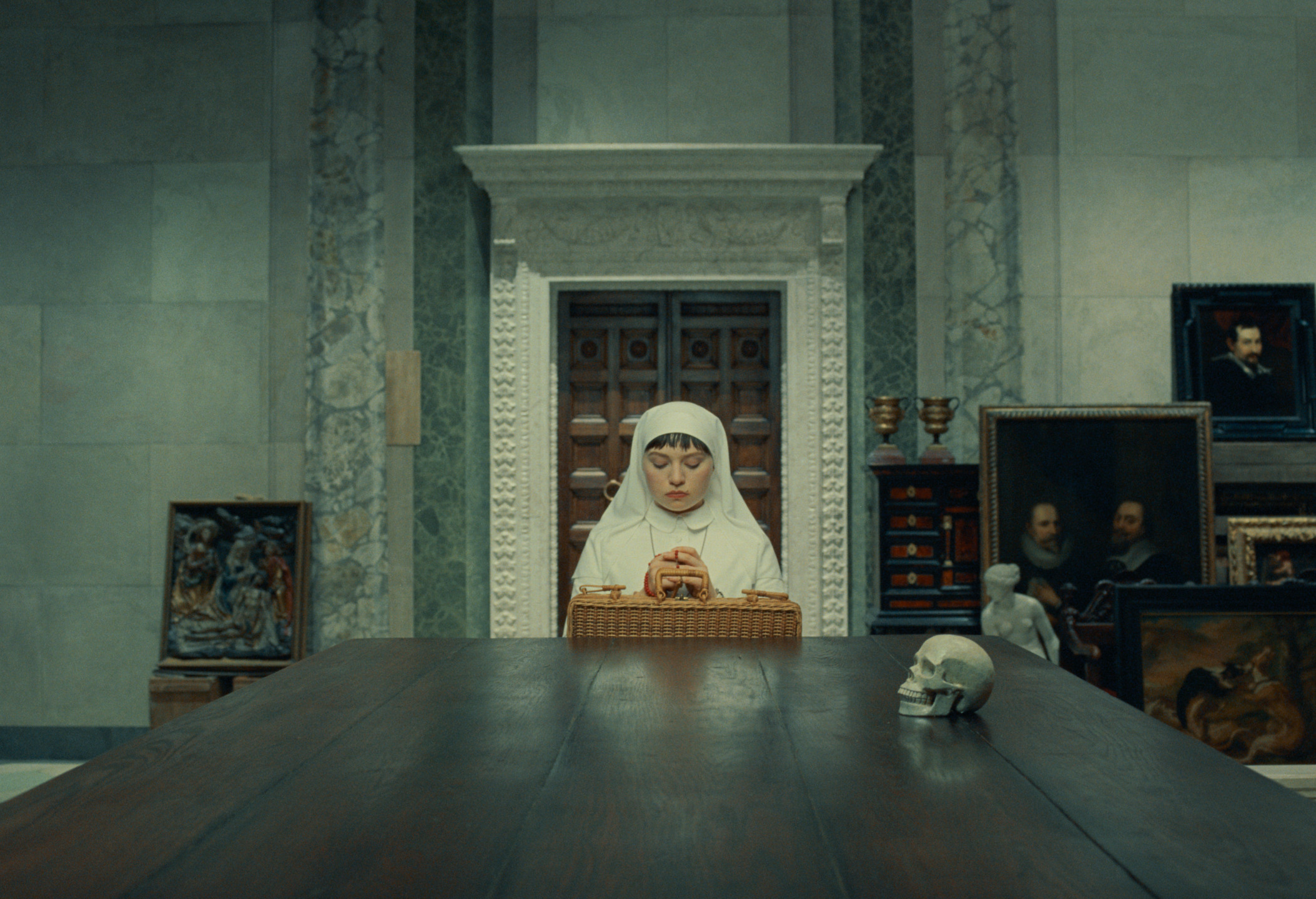Discover the Eclectic Mix of Artwork Featured in Wes Anderson’s The Phoenician Scheme
Numerous masterpieces make a guest appearance in the film, including a portrait by Renoir that was once owned by Greta Garbo

“Never buy good pictures. Buy masterpieces,” advises Benicio del Toro’s character, a fictional tycoon named Anatole “Zsa-Zsa” Korda, in Wes Anderson’s latest film, The Phoenician Scheme. Throughout the film, works by Pierre-Auguste Renoir, Jan Weenix, René Magritte, Tilman Riemenschneider, and others steal moments on screen, planted as part of Korda’s art collection. This wide-ranging art selection is thanks to Jasper Sharp, a longtime collaborator of Wes Anderson’s, who acted as the art curator for The Phoenician Scheme. Sharp, alongside Anderson, successfully procured the loaning of numerous genuine masterpieces from a range of art collectors and institutions, in addition to a few copies here and there, such as a work by Rubens.

One original artwork is Renoir’s Enfant Assis en Robe Bleue, a portrait of the famed artist’s nephew, Edmond. Also known as Portrait d’Edmond Renoir, fils, the 1889 painting depicts the son of Renoir’s younger brother, who also bore the name Edmond. During the filming process, this work was guarded by security and had to be kept at a particular temperature. Outside of its starring role in the film, this particular painting was once owned by none other than Greta Garbo for nearly 50 years. She purchased it in 1942 and displayed it in her Manhattan apartment, which overlooked the East River.
Following her death in 1990, the work hit the auction block at Sotheby’s, selling for $7 million. Some years later, in 2007, it appeared at Sotheby’s yet again, selling for $10.9 million. It had not been seen publicly since, until it showed up in The Phoenician Scheme.
In addition to selecting the film’s artwork, Sharp also organized the transportation of these masterpieces to the film’s set. “We’ve done a lot of movies where we make original artwork, but right at the beginning, I thought, ‘Let’s try to have the real things,’” said Anderson, in a press release. The aforementioned Renoir is from the Nahmad Collection, while the Magritte is from the Pietzsch Collection, and other works are from the Hamburger Kunsthalle. Viewers can expect to see photographs, surrealist works, abstract expressionism, and a 14th-century wood carving.
“It took a little arm-twisting to secure the loans,” said Sharp. “Several people that I approached hung up the phone laughing. But a combination of curiosity and the sense of adventure won out, and the effect of their presence on set was remarkable.”

Ultimately, Anderson knew the real artworks would have more of an impact. “I thought it would mean something to the actors to be with these real objects, and you would feel in the movie that they were real, you can feel it on the set,” the Academy Award-winning director explains. “You can tell the difference, and it has an aura to it. It also meant that there were people with gloves around to protect these objects, and that was interesting, too.”